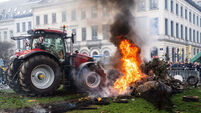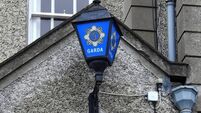Experts believe portraits were work of Rembrandt
The paintings are detailed faces or half-figures showing light striking from unusual angles, leading the experts to conclude that Rembrandt made such studies in preparation for larger historical or biblical compositions.
Chairman of the Rembrandt Research Project Ernst van de Wetering said he could re-attribute the works to Rembrandt based on the subtlety of the lighting and brush work and the materials that were used.
One of the works underwent a major restoration. Over three years, restorer Martin Brijl stripped off the work of an unknown artist, painted about 100 years later, who tried to ‘improve’ Rembrandt’s study of an elderly woman in a white cap typical of northern Holland.
Four studies were displayed today at Rembrandt House, the restored Amsterdam home where Rembrandt spent his last years, in one of the first events to mark the 400th anniversary of the artist’s birth in 1606.
They will move to the Gemaldergalerie in Berlin next year.
One of the paintings, a portrait of an old man with a beard, was signed by the artist. But the others were thought to have come from Rembrandt’s students, done as exercises taken from Rembrandt’s major works.
But Van de Wetering said he now believed Rembrandt painted them himself before embarking on the larger projects to study how to cast a face in shadow from unusual projections of light.
“Paint creates an illusion, and each painter does that a little differently,” he said.
“The way the brush plays with paint, and its relationship to the spacial illusion that is created, is quite specific with Rembrandt.”
The Rembrandt Research Project was launched in 1968 to sift through some 700 works that may or may not have been done by the Leiden-born painter.
About half were discarded as imitations by his students.














